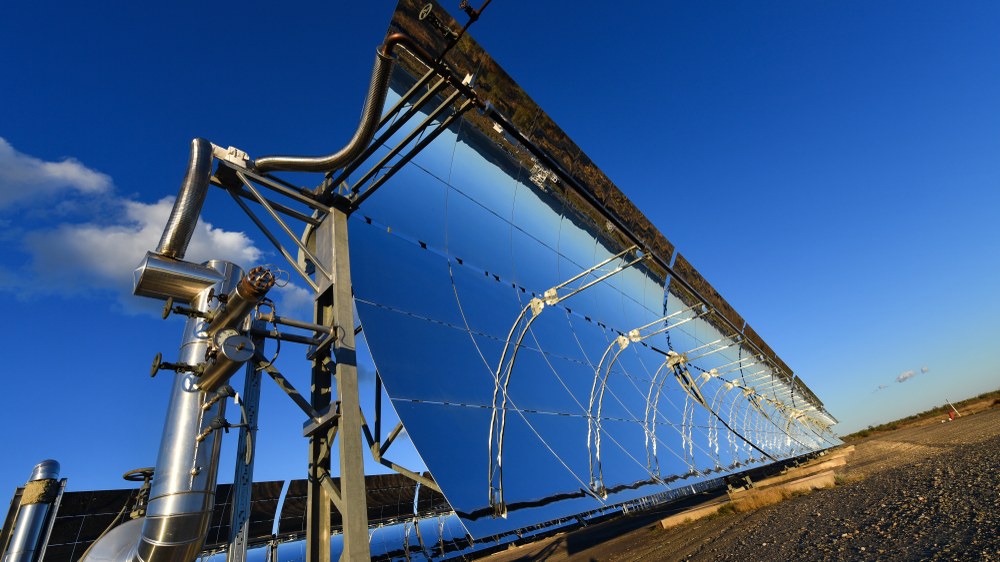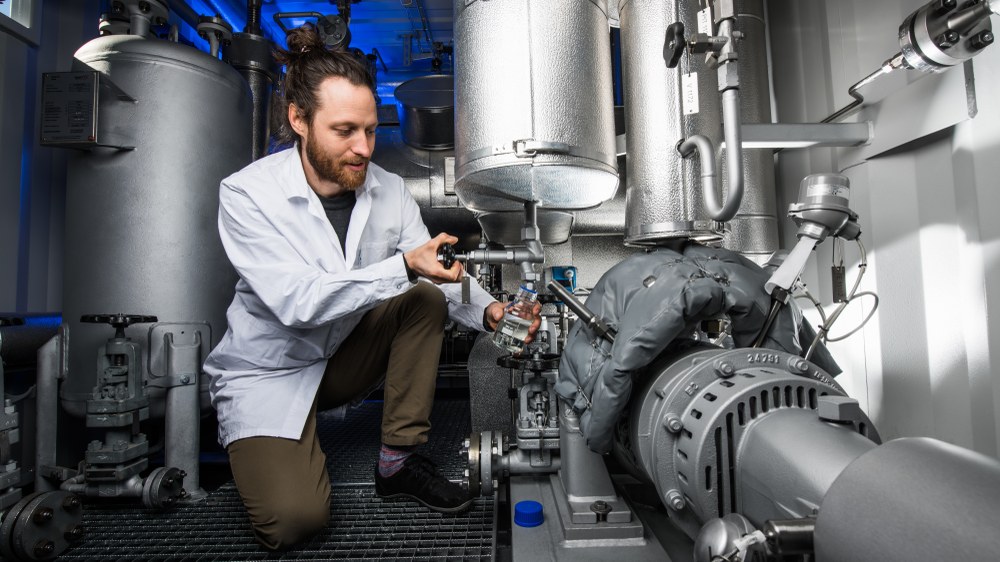In direct systems, the fuel is synthesised directly at the point of light absorption. This means that the sun's energy is utilised directly to produce the fuel.
In indirect systems, on the other hand, the light absorption and synthesis sites are separated from each other. As a rule, a heat transfer medium is used to transfer the thermal energy from the place where the radiation is absorbed or from the receiver to a reactor.
Heat transfer medium for the continuous heating of thermal processes
Heat transfer media play an important role in thermal processes because they help to control the reactions precisely within the desired temperature range. In addition, heat transfer media can be connected to a thermal store either directly or via a heat exchanger. This coupling enables uniform and continuous production. Choosing the right heat transfer medium is crucial to ensure that thermal processes are efficient, safe and environmentally friendly.
Depending on the temperature range, there are suitable heat transfer materials for heating thermal processes:
- Water or water-glycol mixture: for temperatures below 150 degrees Celsius.
- Organic heat transfer media: maximum operating temperature previously 400 degrees Celsius, new organosilicon heat transfer media allow higher temperatures. Tests at the Institute of Future Fuels have reached 425 degrees Celsius.
- Salt mixtures of alkali/alkaline earth metal nitrates or halides: for operation in the temperature range from at least 550 degrees Celsius to a maximum of 650 degrees Celsius.
- High-melting special salts (fluorides), molten metals and gases: for heat transfer at temperatures above 700 degrees Celsius.
At the Institute of Future Fuels, we primarily investigate heat transfer media for processes above around 200 degrees Celsius.

The heat transfer medium should be able to withstand the specific requirements of the thermal process without changing its properties. The chemical stability of the heat transfer medium is of great importance in order to avoid undesirable by-products or reactions with other materials in the system. Efficient heat transfer is also crucial. The heat transfer medium should be able to absorb and transfer heat effectively to ensure fast and even heating of the system.
The environmental impact of the heat transfer medium must also be taken into account. Ideally, it should be non-toxic and environmentally friendly in order to minimise potential risks to people and the environment. The availability and cost of the heat transfer medium are other important factors. An economically affordable and readily available heat transfer medium facilitates the operation and maintenance of the system.
In addition, the heat transfer material should be as easy to handle as possible and the heat transfer system should be easy to maintain. The associated high costs can increase operating costs and impair the efficiency of the process.
Heat transfer media for solar thermal parabolic trough power plants
Commercial parabolic trough power plants currently mostly use a thermal oil as a heat transfer medium in the solar field, which consists of around 26.5 per cent biphenyl (BP) and 73.5 per cent diphenyl ether (diphenyl oxide, DPO) and which shall be heated up to a maximum of 393 degrees Celsius in these plants. This temperature limit influences the maximum efficiency of the power plant process. The fluid tends to decompose gradually even at temperatures below 400 degrees Celsius, which leads to a self-reinforcing decomposition rate.

At the Institute of Future Fuels, in addition to the decomposition of the BP/DPO mixture, we are investigating hydrogen formation, distribution and elimination in power plant heat transfer systems as well as the hydrogen absorption behaviour of solar radiation receivers in order to avoid unwanted accumulations of the gas that can occur during operation. These would lead to increased heat losses because hydrogen can impair the insulation properties of the receivers.
Tests at the Institute of Future Fuels have shown that new organosilicon fluids (silicone oils) have a lower tendency to form hydrogen in comparison. At 400 degrees Celsius, these fluids only form a small amount of hydrogen during commissioning and no more in the long term. At significantly higher operating temperatures such as 430 degrees Celsius, the long-term hydrogen formation of the silicone oils is much lower than with conventional BP/DPO mixtures at only 400 degrees Celsius.
Qualification of innovative heat transfer fluids
We are researching and developing new heat transfer fluids that can be operated at higher temperatures. In addition to their improved thermal resilience, other properties also play an important role in driving the development of new fluids or selective fluid maintenance processes: low toxicity, environmentally friendly behaviour in unused and used states and application properties such as low melting point, low vapour pressure, high heat capacity, high thermal conductivity, moderate viscosity, moderate density and low volume increase on heating.
The research and investigation of new heat transfer fluids takes place in the Heat Transfer Fluid Laboratory and in the technical centre facilities of our institute. This involves not only analysing new materials and their properties, but also qualifying key technical components such as pumps, sensors, valves, mass flow measurement systems and corrosion properties.


